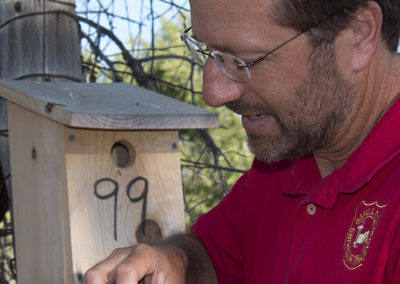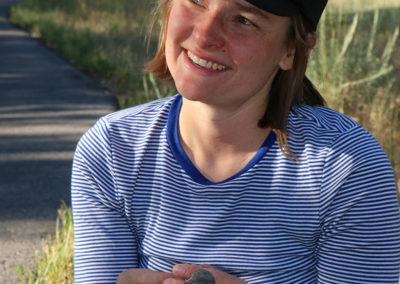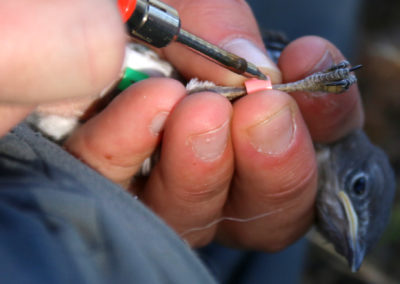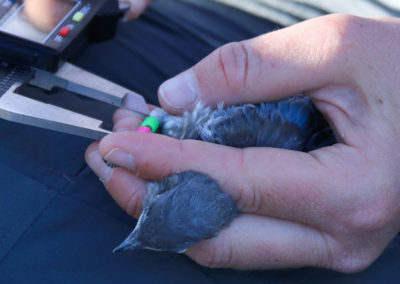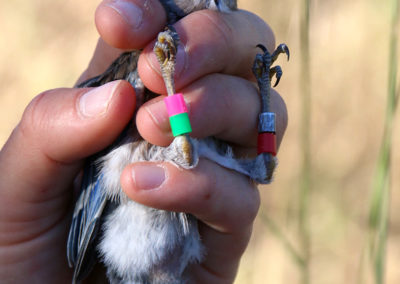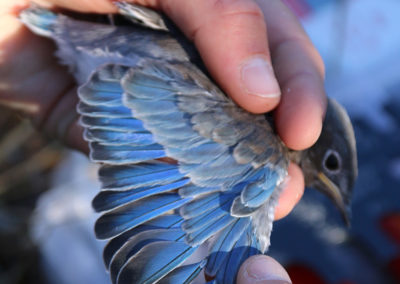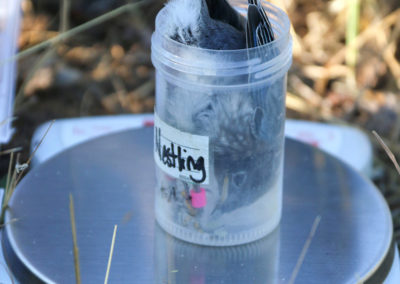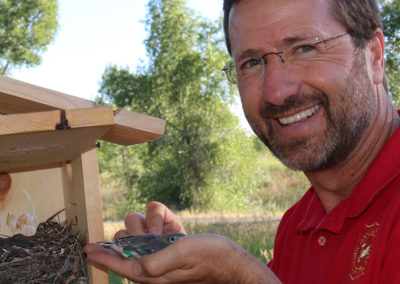Bluebirds with Bling: Mountain Bluebird Banding Background
In 2017, bander Allison Swan and monitoring volunteers began placing USGS aluminum bands as well as a unique series of color bands on each of 98 Mountain Bluebird nestlings and one adult female. That will allow us to view and identify each individual returning bird and to follow along as it hopefully raises some little bluebirds of its own!
What’s more, banding these birds will provide new data, expanding on over 15 years of nestbox monitoring data and helping to answer questions related to survival rates of young, dispersal patterns, re-nesting rates, productivity by age and other elements of population dynamics.
Staff and volunteers are working to gather these data by resighting color banded bluebirds, or “Bluebirds with Bling,” but we would love your help!
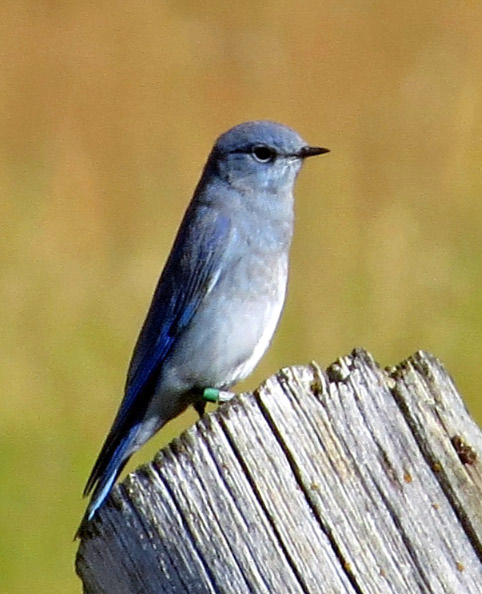
Photo credit: Jim Crabb
Mountain Bluebird From Nestbox 99 Gets Banded
In this image gallery, Bird Bander Allison Swan works with volunteer Mark Gocke to band a feathered denizen of nestbox 99 on the Nature Mapping Jackson Hole trail along the National Elk Refuge with colored bands AKA “bracelets” or “bling.” Photos courtesy of Mark Gocke (WGFD). Click image to enlarge and read captions.
Mountain Bluebird Resighting Protocols
What sort of information are we looking for?
Really, any and all information you’re able to provide for mountain bluebird resighting will be helpful and appreciated. Feel free to print a copy of our resighting data sheet to take with you as a guide. Download Resighting Data Sheet Here
Color Band Combinations
Do you see any flashes of color on a Mountain Bluebird’s legs? Those are color bands!
Each bird has been banded with one silver/aluminum band and three color bands. With two bands on each leg, the overall combination allows us to identify the individual bird from afar and ongoing resighting reports help us to follow that individual’s activity throughout the season and over the course of multiple years. So, when reporting bands, please indicate which color you saw on the top right, bottom right, top left, and bottom left. To clarify, that is the bird’s right/left leg and top refers to the band closest to the bird’s body while bottom is closest to the foot.
Band colors to watch out for:
- Silver (aluminum USGS band with an individual number series)
- Red
- Yellow
- Green
- Peach
- Hot Pink
- Gray
- Black
It can be understandably difficult to see the full color band combination every time. After all, birds are active wild animals who need to move around a lot to find food, defend a territory and build a nest. And that’s before they have nestlings to care and provide for! So, if you just can’t see that last color band because the bluebird is moving around or has its leg tucked up in its feathers or if you aren’t sure if the band is red and not hot pink, let us know! We’d rather you let us know if you have some uncertainty than try to guess and risk recording incorrect data. As Bert Raynes says, “When in doubt, leave it out.” It’s possible we’ll still be able to identify that bird, even with an incomplete color combination.
Location and Substrate
Where did you see the bird? Please be as specific as possible—if you’re able to provide the exact latitude/longitude or UTM (Universal Transverse Mercator) point, great! Either way, a verbal description of the location would be appreciated.
What is the bird perched upon? A fence post or nestbox? In sagebrush or an Aspen tree? On the ground?
Behavior
What is the bird doing while you watch? Examples of activities to note include interactions between the male and female or between parents and juvenile birds, food or material carries if you see an adult bringing food or nesting material back to the nest box, or vocalizations if you hear the bird singing or calling.
Sex and Plumage
Is the bird male or female? Mountain Bluebirds are sexually dimorphic, meaning you can differentiate between the males and females based on the color of their feathers and overall appearance.
Adult male Mountain Bluebirds are sky-blue overall, ranging from deep sky-blue along the wings and tail to pale blue and white on the bird’s underside.
Adult females tend to be more grayish to gray-brown overall with blue along the wings and tail.
Does the bird have adult or juvenile plumage?
Early on in the season, you’re most likely to see adult Mountain Bluebirds. That said, you’re likely to start seeing juvenile bluebirds as early as the end of May, as they begin to explore the world outside their nestboxes. Both male and female juveniles look similar to adult females, but they have pale spotting interspersed among their breast feathers.
When in doubt, it’s ok to put unknown.
Notes
Notes can include whatever you want them to. The more information and detail the better!
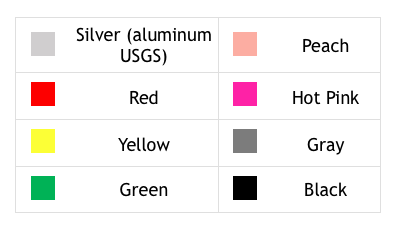
Colors of Mountain Bluebird Bands
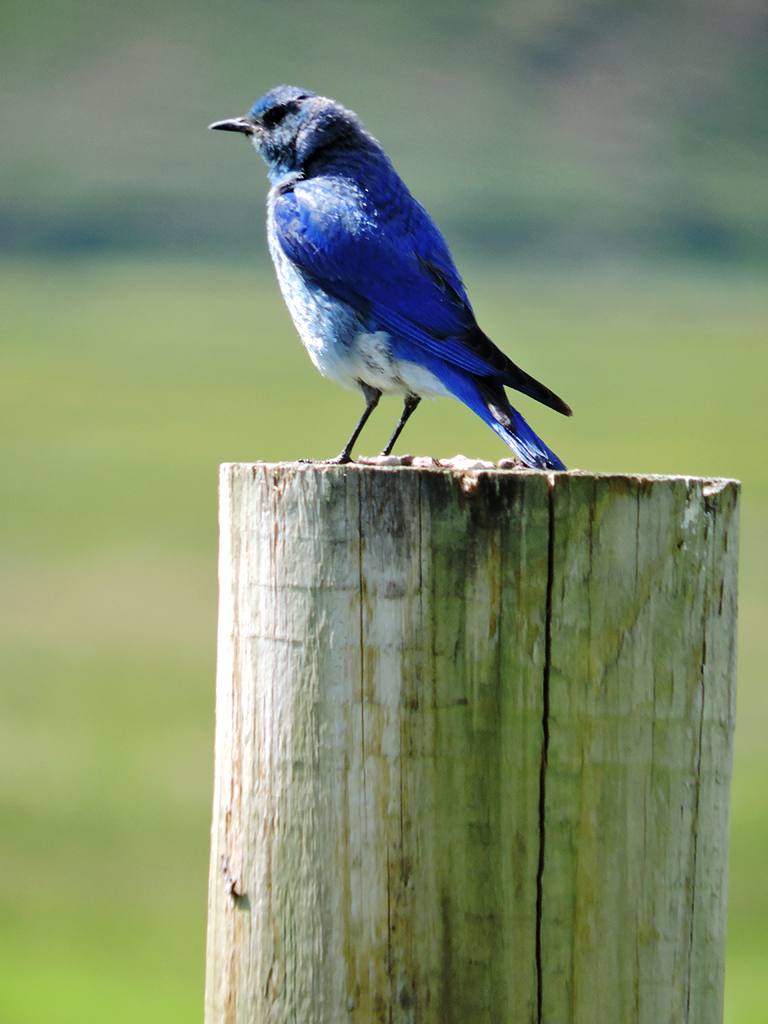
Male Mountain Bluebird perched
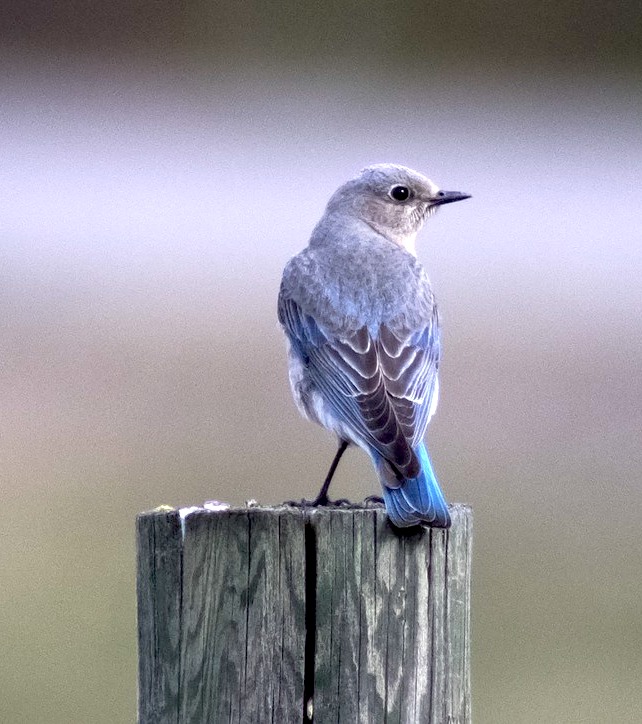
Female Mountain Bluebird perched
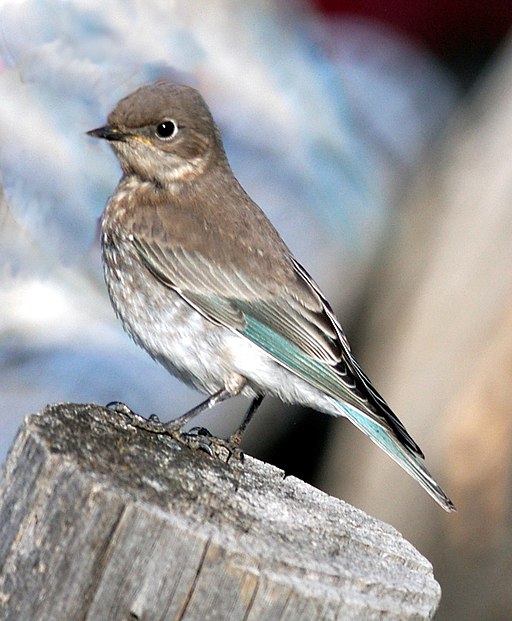
Juvenile Mountain Bluebird has Spotted Feathers. Photo: Mark Wagner Creative Commons
Photo Credits:
Henry Holdsworth
Mark Gocke
Steve Morriss
Sava Malachowski
Leine Stikkel
Tim Griffith
Jon Mobeck
Jackson Hole Wildlife Foundation
Office Location:
25 S. Willow St., Suite 10
Jackson, WY 83001
Mailing Address:
PO Box 8042
Jackson, WY 83002
All rights reserved.
Privacy Policy

